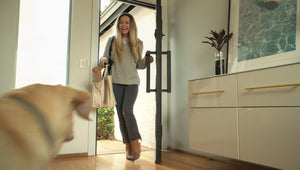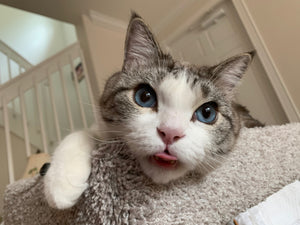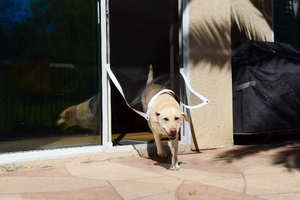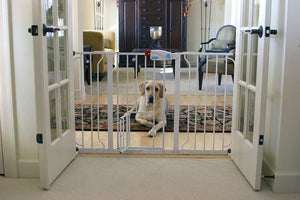Ultimate Step-Over Guide for Safe & Easy Pet Door Access
No matter where you’re installing a dog or cat door, the step-over should be one of your most prioritized considerations when selecting your pet door size. Getting the correct size pet door is key for getting the best dog door for your pets. The height of your pet door can affect whether your pet has trouble going through their door or not, whether they're a giant breed or a smaller dog or cat.
For those wondering what size dog door they need, keep reading to learn all about step-overs and how they impact doggie doors. Keeping in mind how your pet will be stepping over their pet door from the start will save you time and money by ensuring that you select the proper, high-quality dog door size or cat door size for your pet.
What is a Step-Over?
A step-over can often be referred to as a “step-over range” or “rise.” They are all names describing the distance between the bottom of the flap door and the ground. That space determines how high your pet has to lift their paws to step through to the other side. To compare, it’s like the pet owners trying to go over a hurdle. The higher the hurdle, the more difficult it is to lift our legs over. On door and wall models, you can decide on your step-over during installation.
Step-Over Range in Patio Panels

For sliding door glass inserts, the step-over range is fixed. Depending on the model, these ranges are determined by the pet door and flap size. The bigger the door flap and opening size, the bigger the range, since the insert would presumably be for a tall dog. Although the Ideal Fast Fit Patio Door model has a fixed height, there are options to customize and reduce the height. It is important to know any fixed step-over cannot be taken out or broken as a way to reduce the rise. If this is an issue, you may want to look into adjustable step-overs. Only the Thermo Panel 3e offer an adjustable pet door solution. Adjustable ranges are a great asset to have for larger dogs, small dogs, and cats sharing a door.
Effect on Flap Sizes
When considering the right step-over height, the dog's height and dog's width is not as important as the measurement of the dog's shoulder. Any and every flap should be placed at least an inch above your pet’s shoulder. However, this does not mean the flap’s height has to measure an inch higher than the shoulder. If you are wondering how to measure shoulder height on dogs, check out our size chart guide on how to measure height your dog's height to select the perfect pet door. Typically, this means selecting an appropriate flap size that is above the shoulder height of a dog or cat. The bigger the flap, the smaller your step-over can be. Generally, on doors and walls, the dog door height from the floor will be no less than 3″ or so. Although this means dog doors for large dogs or extra large dogs could have a smaller flap height and a large step-over, remember to consider that a large step-over might be hard for an old, arthritic doggie to use. On the other hand, the smaller the flap, the bigger step-over you may need. Let’s do an example:
- Your pet is 21” from feet to shoulder. So, the top of the flap, once installed, needs to be 22” above the floor so your pet can move through easily. With careful consideration, you can get away with a 15” flap height. A 15” height means your step-over near the bottom of the pet door needs to be 7” minimum. Since you raised the 15" flap 7 inches from the ground, the top is now 22” above ground. Your pet can move comfortably! If you have a 19” flap, your step-over would need to be at least 3” high.
Your Pet Will Thank You Later

The shorter the step-over, the better. As pets age or become arthritic, a higher step-over is hard to combat on a daily basis, even for the tallest pet. How high you install your door affects the comfort of your pet. If you are preparing for a wall or door mount, you get to choose the best step-over height. Grab your pet and a measuring tape, they’ll thank you later!
If you go with a high step-over, make sure your pet can handle it. If you are installing in a door, keep the pet door flap as low as possible while maintaining the integrity of your home.




